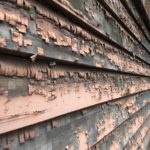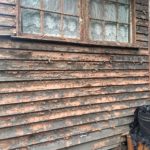If you live in a neighborhood with housing built before 1978, chances are you have the toxic element lead lurking nearby.
Lead is a heavy metal and potent neurotoxin that is particularly hazardous to the developing brains of children under 5 years of age. Lead exposure can occur from a variety of sources including: deteriorating pre-1978 lead paint, pre-1950 private water service lines, dust from demolition, and soil contaminated from lead-based gasoline emissions, paint, and industry.
Let’s face it, lead was once ubiquitous. It makes paint hardier, and it is a soft malleable metal to work with. The word plumber even comes from the element’s Latin name Plumbum (Pb). Fortunately, we know lead is not something we want in our homes, and we have come a long way in removing this poison from many of our products.
There are several ways to check for its presence in your home. The two easiest places to look are your paint and water service line. If you have peeling paint outside or inside, you can use a 3M Lead Test Swab, which can be purchased in packs of two at Lowes or Home Depot for about $10.00.
Homes built before 1950, used lead to make water service lines. You can check your own home by going to your water heater, and locating the pipe connecting your water heater to the wall. If the pipe is dark colored and NOT magnetic, it is likely lead. If you live in Philadelphia and have a lead service line, you qualify for their service line replacement program, information accessible here:
https://www.phila.gov/water/wu/drinkingwater/lead/Pages/programs.aspx






